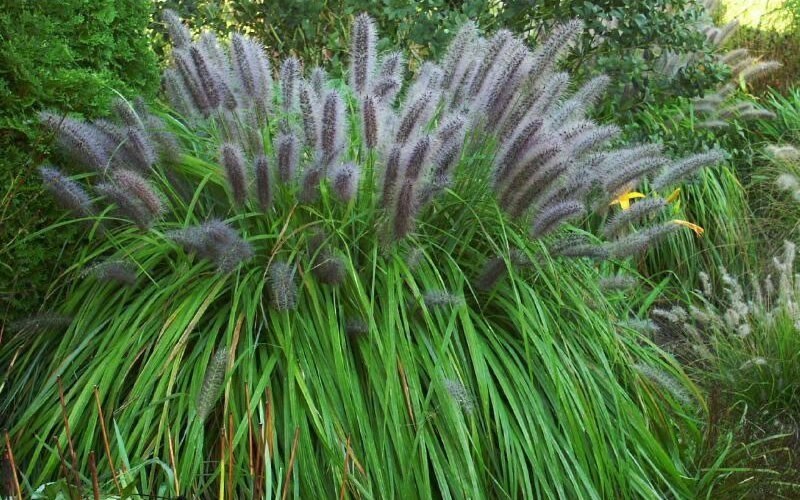Fountain Grass (Pennisetum setaceum)
Arabic name: حلفا حمراء
Fountain Grass (Pennisetum setaceum) is an attractive clump forming ornamental grass. Native to Africa’s open grasslands, Fountain Grass is an extremely tough and drought tolerant plant. Its graceful arching leaves and feathery flower spikes give it a striking appearance, and make it a popular plant in gardens. Fountain grass blooms in summer, and the flowering spikes last till fall. Reddish, copper and purple colored cultivars also are available. It is dormant in winter.
It grows to a height of 1.0m, with a spread of 0.7m. It has a fast growth rate, and reaches its matures size in six months to one year.
Requirements: Grows in full sun, and tolerates partial shade. Colors are richer in full sun. Is not particular about soil, and is tolerant of acidic and alkaline soils.
Water usage: Low watering (twice a month).
Appearance:
Fountain grass forms a dense rounded clump that is topped with erect stems carrying the feathery flower spikes. Leaves are slender curving blades up to 60cm long. The pink or purplish soft plume-like flower spikes are borne in summer, and are 15 – 35cm long. The spikes are carried 30cm above the leaves.
Notes on use: An accent plant; effective as a solitary plant or in groups, and can be used in borders with other plants. It also may be grown in containers.
Propagation:
Propagates by seeds. Most cultivars are non-seeding, and propagate by clump division.
Maintenance:
Fountain grass requires no maintenance. If old specimens start to look unkempt, remove dead growth from the clump.
Comments:
The feathery spikes are often used in flower arrangements.
Fountain grass seeds itself freely. To avoid seeding in the garden, plumes should be cut before seeds mature.
Image source: https://www.provenwinners.com
Image source: https://www.gardenerdirect.com
This article is part of a series of articles prepared by the Center for the Study of the Built Environment (CSBE) on water conserving landscapes. For additional information on water conserving gardens, visit the CSBE web site at www.csbe.org
Support for the CSBE project on water conserving landscapes is provided by WEPIA (Water Efficiency and Public Information for Action), a program being implemented in collaboration with the Ministry of Water and Irrigation and funded by the United States Agency for International Development (USAID).


